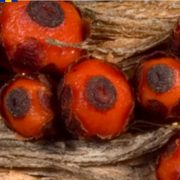
The mysterious Pilostyles is a plant within a plant
Blog
Pilostyles are only visible when their fruit and flowers erupt out of their host plants.
The Conversation/Wikipedia
Steve Wylie; Jen Mccomb, and Kevin Thiele, University of Western Australia
In 1946, forestry officer Charles Hamilton found something unusual on a shrubby native pea plant…
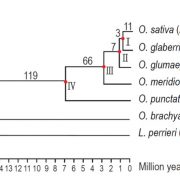
Escape from Centromere Land
Blog, The Plant Cell, The Plant Cell: In BriefAs plant biologists, we do love to consider the physiological adaptations plants have made to being sessile organisms—unlike animals, plants cannot move away from adverse environmental conditions such as high temperature, etc. We commonly consider such responses for organisms, but what about genes?…
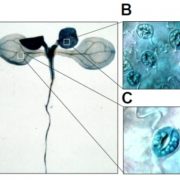
CDL1-OST1 Interaction as a Focal Point of Brassinosteroid-Abscisic Acid Hormone Signaling Crosstalk
Blog, The Plant Cell, The Plant Cell: In BriefPlants integrate signals in the form of light, humidity, temperature, CO2 concentrations and daily circadian rhythms. In addition, plants encounter pathogens, pests, herbivores and other stressors. Physiological processes like responding to stimuli, plant growth and development are usually governed and…
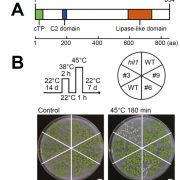
Heat Trims the Fat: HIL1 Functions in Lipid Homeostasis
Blog, The Plant Cell, The Plant Cell: In BriefGlobal climate change is one of the most pressing issues facing our world today. The impact of increasing temperatures can be felt in diverse areas, including human health and disease, natural ecosystems, and food security. In the agricultural sector, deciphering how plants respond to changing environmental…

Recognizing Plant Cell first authors: Abdellatif Bahaji
The Plant Cell, The Plant Cell: Author ProfilesAbdellatif Bahaji, first author of Plastidial phosphoglucose isomerase is an important determinant of seed yield through involvement in gibberellin-mediated reproductive development and biosynthesis of storage reserves in Arabidopsis
Current Position: Postdoctoral fellow at the Instituto de Agrobiotecnología,…
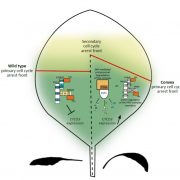
Arabidopsis Leaf Shape Regulation
Blog, Plant Physiology, Plant Physiology: On The InsideLeaf morphology, both between species and within the same organism,
is diverse: leaves can be simple or compound; they can have margins that are smooth or serrated, and they can be flat or have various curvatures. In Arabidopsis, leaf development starts with extensive cell proliferation throughout…
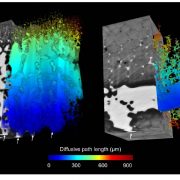
Variations in Leaf Intercellular Air Spaces
Blog, Plant Physiology, Plant Physiology: On The InsideDuring the course of evolution, the invasion of lands by plants exposed plant tissues to air,
which dramatically lowered the resistance for CO2 diffusion to chloroplasts by ~10,000-fold. The evolutionary development of the leaf intercellular airspace was a key innovation that allowed land plants…
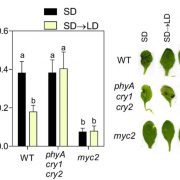
Long-Days Enhance Jasmonic Acid-Related Plant Defense
Blog, Plant Physiology, Plant Physiology: News and Views, Plant Physiology: On The InsideDepending on the species, daylength profoundly affects the timing of key developmental transitions in plants, including, floral initiation, tuberization, and bud set and growth cessation in trees. To explore additional effects of daylength on plant function, Cagnola et al. (10.1104/pp.18.00443) investigated…
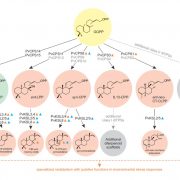
Diterpenoid Metabolism in Switchgrass
Blog, Plant Physiology, Plant Physiology: On The InsideSwitchgrass (Panicum virgatum) is a perennial C4 grass native to North America primarily valued as a next-generation feedstock for biofuel production. Its high net energy yield and
wide habitat range make switchgrass an attractive crop for cultivation on marginal lands with minimal agronomic inputs,…

